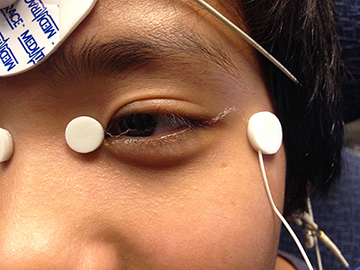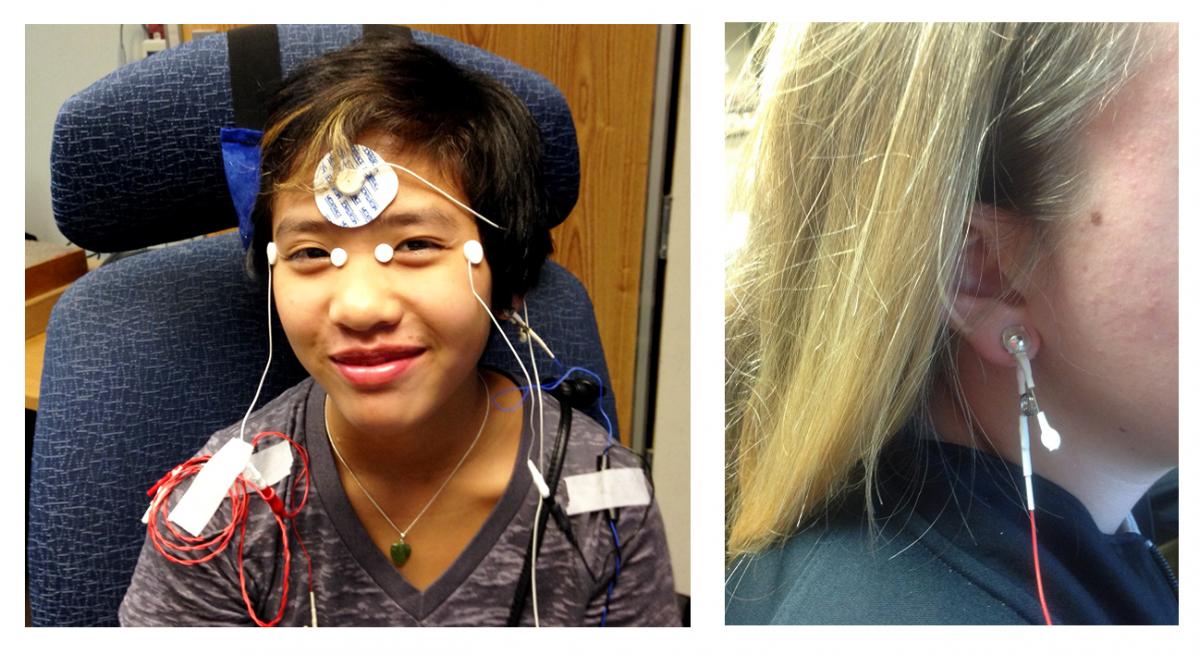Do not be afraid of the Full Field Electroretinography (ERG)!
Full Field Electroretinography (ERG) is a test used to detect abnormal function in the retina (the light-detecting portion of the eye). Specifically, this test examines the function of the light-sensitive cells of the eye (the photoreceptors), and several other cells that process these light signals before they are sent to the brain. There are two types of photoreceptors in the human eye: rods and cones. Cones provide central high-acuity vision used for reading and are also for color vision. Rods provide vision in dim light. During the ERG test, the photoreceptors produce tiny amounts of electricity in response to brief flashes of light. A normal ERG contains an a-wave (initial negative deflection) followed by a b-wave (positive deflection). The leading edge of the a-wave is produced by the photoreceptors, while the remainder of the wave is produced by a mixture of cells.

Typical ERG a-wave and b-wave amplitude.
To detect the electrical response of both the rods and the cones, special electrodes are placed on the surface of the eye. There are several types of electrodes that are used during the test. The common one used at our facility is the DTL electrode which is a fine thread that lays across the surface of the eye. Below is a picture of a DTL electrode.

Besides the eye electrode, additional electrodes are placed on the forehead and the ear lobe.

The picture on the left shows the complete placement of electrodes which includes the DTL eye electrode, the ear electrodes and, the forehead electrode. The other electrodes stick on with a gentle adhesive. The image on the right shows the ear electrode placement. It clips on like an earring.
The test usually takes between 45 minutes to an hour. There is a 25 minute dark adaptation step, in which the patient sits in the dark (with a parent or friend if desired. It is boring, but we have activities kids can do in the dark to make the time pass more quickly). The test is painless. However, the electrode that rests on the eye may feel a little like an eyelash is in the eye. This sensation may last up to several hours following completion of the ERG. One should not rub the eyes for at least an hour after an ERG (or any test in which the cornea has been numbed), to avoid scratching the cornea.

